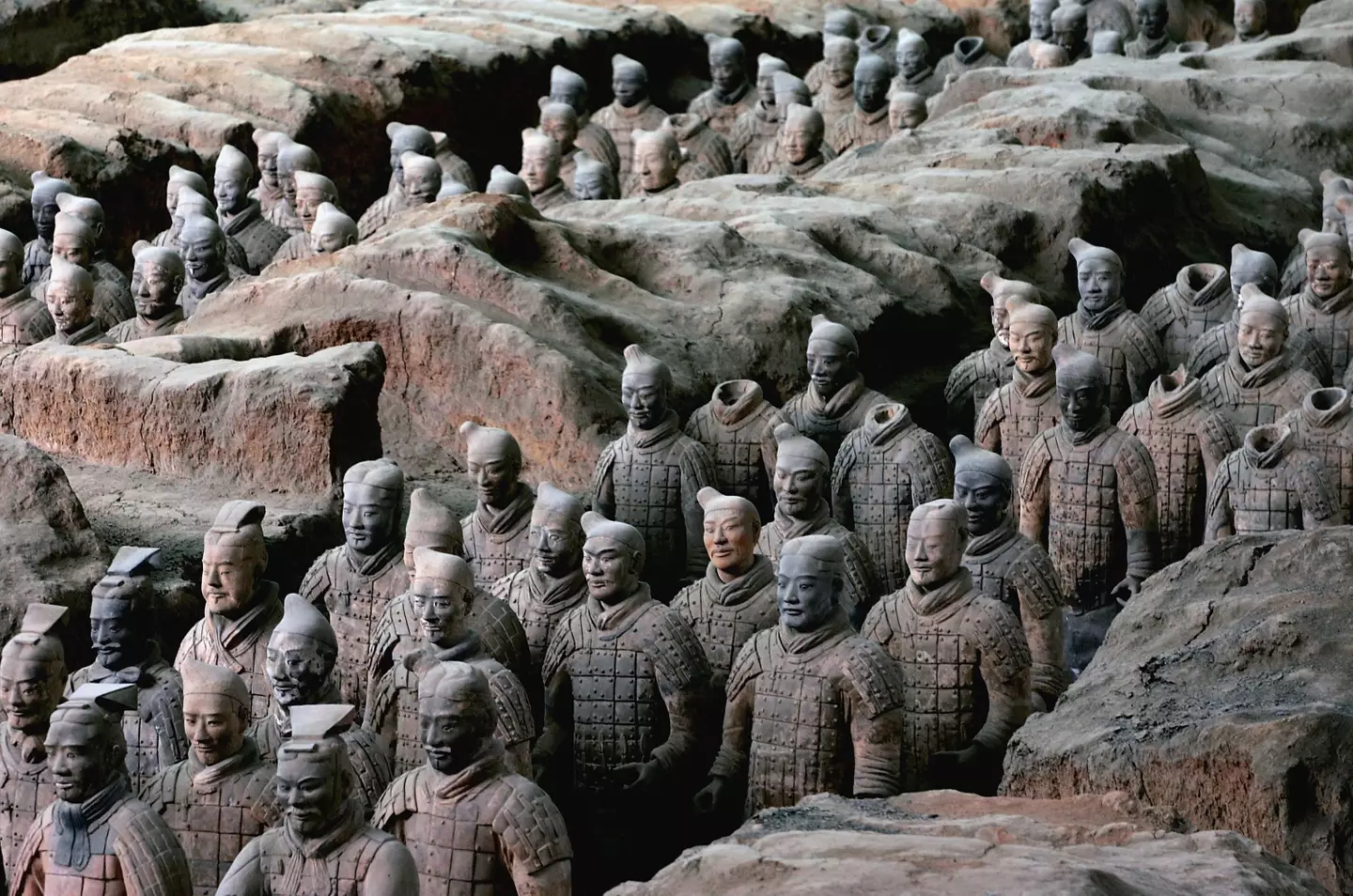.webp)
Archaeological experts aren’t too keen on prying open the tomb of China’s first-ever Emperor, Qin Shi Huang.
The discovery of the first unifier of China’s burial spot remains one of the most major archaeological findings in modern history.
Previous expeditions into the huge complex have been successful, with hundreds of figures being found in various compartments.
Advert
These Chinese statues are known as the terracotta warriors that form part of the world-renowned Terracotta Army.
This sculpture collection was buried alongside Qin Shi Huang to protect him in the afterlife and are thought to depict soldiers as well as non-military people such as officials, strongmen, and musicians.

These figures were placed in the tomb of the Emperor to protect him during his journey to the afterlife and presumably to keep him entertained, too.
Advert
While much of the tomb has already been explored by experts, a single complex remains unopened - the tomb of Qin Shi Huang himself.
The burial spot, where the Qin dynasty founder was set to rest back in 210 BC, is in the centre of the mausoleum.
However, archaeologists still aren’t 100 percent sure about opening up this part of the tomb and have repeatedly delayed expeditions to the sarcophagus.
Interestingly though, this concern isn’t born out of fear of curses - although there are concerns it could be filled with booby traps.
Advert
But experts have a more important reason for not venturing into the tomb.

When first excavating the complex, the previously mentioned Terracotta Army were found painted in rich colours.
However, the sudden change in atmosphere meant that the paint began to peel off and now the statues are completely plain.
Advert
Because of this, archaeologists are now hesitant to open the imperial chamber because they believe the change of atmosphere could again hurt whatever is inside.
For this reason, scientists are waiting for the technological advancements necessary to open the tomb without damaging what's inside.
It’s said that with time, the Emperor’s burial spot could be preserved and the potential magnificence wouldn’t have to be lost.
Kristin Romey, a curatorial consultant for the Terracotta Warrior exhibition at New York City’s Discovery Times Square, told Live Science: "The big hill, where the emperor is buried — nobody's been in there.
Advert
"Partly it's out of respect for the elders, but they also realise that nobody in the world right now has the technology to properly go in and excavate it.”
The chamber has also yet to be breached because there is a huge political question hovering over the site.
Due to the site providing a direct connection to the beginning of China as we know it, the country understands that opening the tomb is a pretty big deal.
Of course, history is not something you want to hastily deal with.
So, for now, the Emperor will remain untouched and unseen, just as he has done for the last 2,000 years.
Topics: China, Science, World News, News
